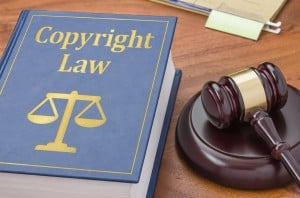
(Image via iStock)
The facts of the case are pretty simple. DynaStudy created a number of study guides. These guides were apparently particularly helpful, so the principal of a Houston high school purchased some, made copies, then distributed them to students. The study guides included an express statement on the bottom, “Copying this material is strictly prohibited.” A teacher pointed this statement out to the principal, who brushed off the concerns and the teacher replied via email, “I’m ok with violating it though . . . lol.” Additional emails were also included in evidence in the litigation. In some cases, employees cropped out or covered up DynaStudy’s logo and the copyright warnings, then distributed these copies throughout the district. Some copies ended up far beyond the Houston school district, and the guide was found publicly posted online in states as far as New Jersey.
This case is a pretty egregious case of copyright infringement, with administrators and educators either completely ignorant of copyright law or aware and content to ignore the ramifications. Neither willful blindness nor blatant disregard for copyright law go over well in copyright cases.
Let’s start with the teacher’s emailed response. Of course that email was going to end up in discovery. A jury is not going to look favorably on a blatant admission that someone is “ok with violating” copyright. Additionally, the fact that teachers removed DynaStudy’s logo and cropped out or covered up the copyright statement seems to indicate that they were reproducing and distributing the works with full knowledge that they were likely violating copyright law.
Goodbye innocent infringement defense, hello statutory damages. Remember that the Copyright Act requires a court to remit statutory damages where an employee of a nonprofit educational institution — like a high school — acting in the scope of his employment, believed that his reproduction of copyrighted works was fair use. Clearly not the case here, and the final jury verdict awarding DynaStudy $9.2 million confirmed that blatant disregard for copyright results in major damages.
Attorneys representing the Houston school district tried to assert that the staffers were unaware that they were violating copyright. Again, clearly not the case given the email exchanges DynaStudy used to bolster their claims.
The attorneys also tried to claim that the reproduction and distribution constituted fair use. Any regular readers of this weekly column will know that I’m a huge fan of fair use. I believe that robust use of the fair use right is critical in ensuring balance in the U.S. copyright system, particularly as we generally see a one-way ratchet in increasing the rights of rightholders, not users. But this case is clearly not a fair use case.
Sometimes, people mistakenly think that any educational use will be considered a fair use. This idea is a myth. While the fair use statute, codified in Section 107 of the Copyright Act, does note that a valid fair use purpose could include “teaching (including multiple copies for classroom use)” and the first factor notes that one consideration is “whether such use is of a commercial nature or is for nonprofit educational purposes,” courts must still apply the four factors to determine whether that particular use is fair. Not all educational uses are fair uses, otherwise textbooks wouldn’t cost so much. If all education uses were fair, a teacher could purchase one copy of a biology textbook at $120 and make 90 copies for each of his freshman biology students.
Applying the four factors, it is clear that the Houston school district’s use falls short. While the purpose and character of the use could favor the school district, the third factor (the amount and substantiality of the portion used in relation to the whole) would weight against the use. The school district basically copied the other entire guide, rather than excerpting a small portion. They used the entire guide — except where they removed DynaStudy’s logo and copyright warning — and did nothing to adapt or transform the work. The fourth factor — the effect of the use on the potential market — also clearly weighs against the use because the proliferation of copies and distribution to students meant that neither the school district nor the students (or parents of the students) were purchasing these guides from DynaStudy. I certainly remember purchasing similar laminated study guides when I was a high school student for chemistry, calculus, Spanish, and other courses. Would I have spent my hard-earned money on these guides if I had been given copies for free by my school? Probably not. I would’ve used that money to go to the movies or have smoothies with my friends.
Following the verdict, the school district issued a statement noting that all of its employees would participate in online copyright training each year. Principals will receive additional training. This copyright training is clearly needed, to avoid any assumptions that all education uses are fair uses or that simply removing a copyright statement renders that work free from copyright. Of course, good copyright training should also make teachers aware of their fair use rights (I hope this $9.2 million verdict won’t forever scare away teachers in the school district from exercising legitimate fair uses); this case is simply an example of what is not fair use.
Krista L. Cox is a policy attorney who has spent her career working for non-profit organizations and associations. She has expertise in copyright, patent, and intellectual property enforcement law, as well as international trade. She currently works for a non-profit member association advocating for balanced copyright. You can reach her at kristay@gmail.com.

